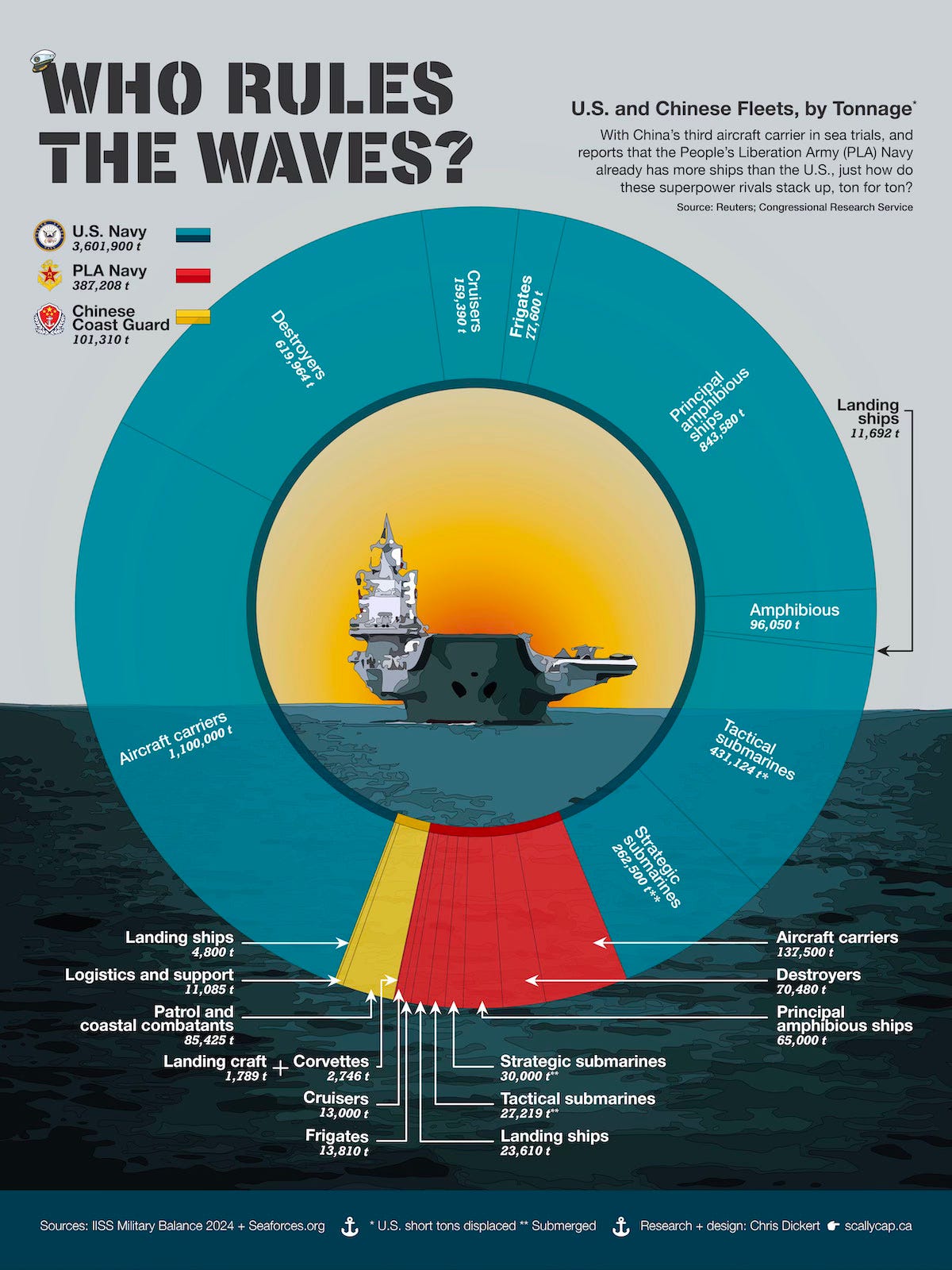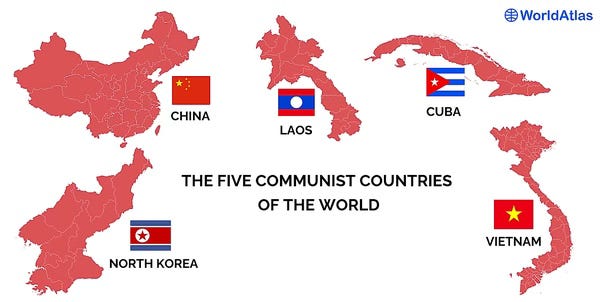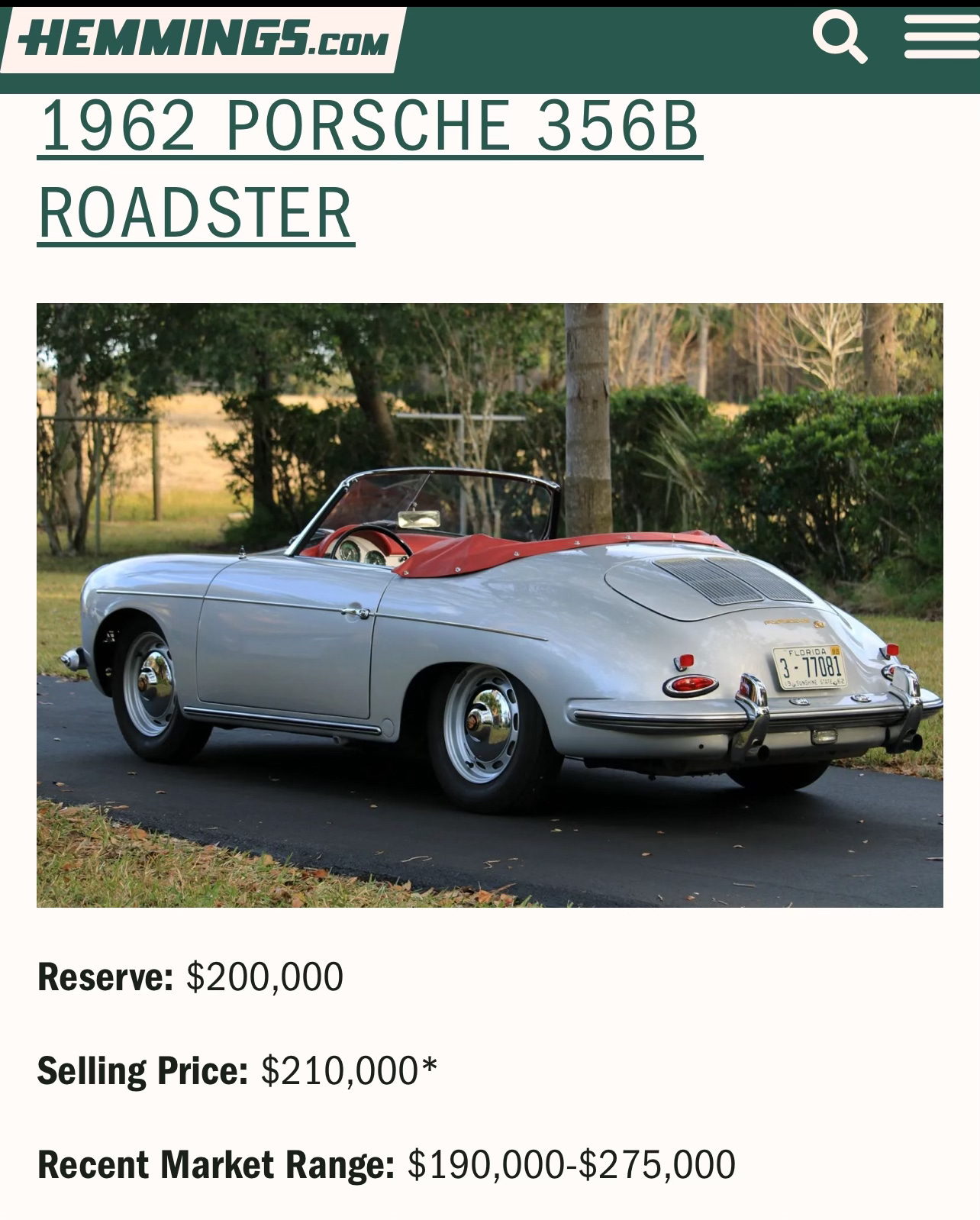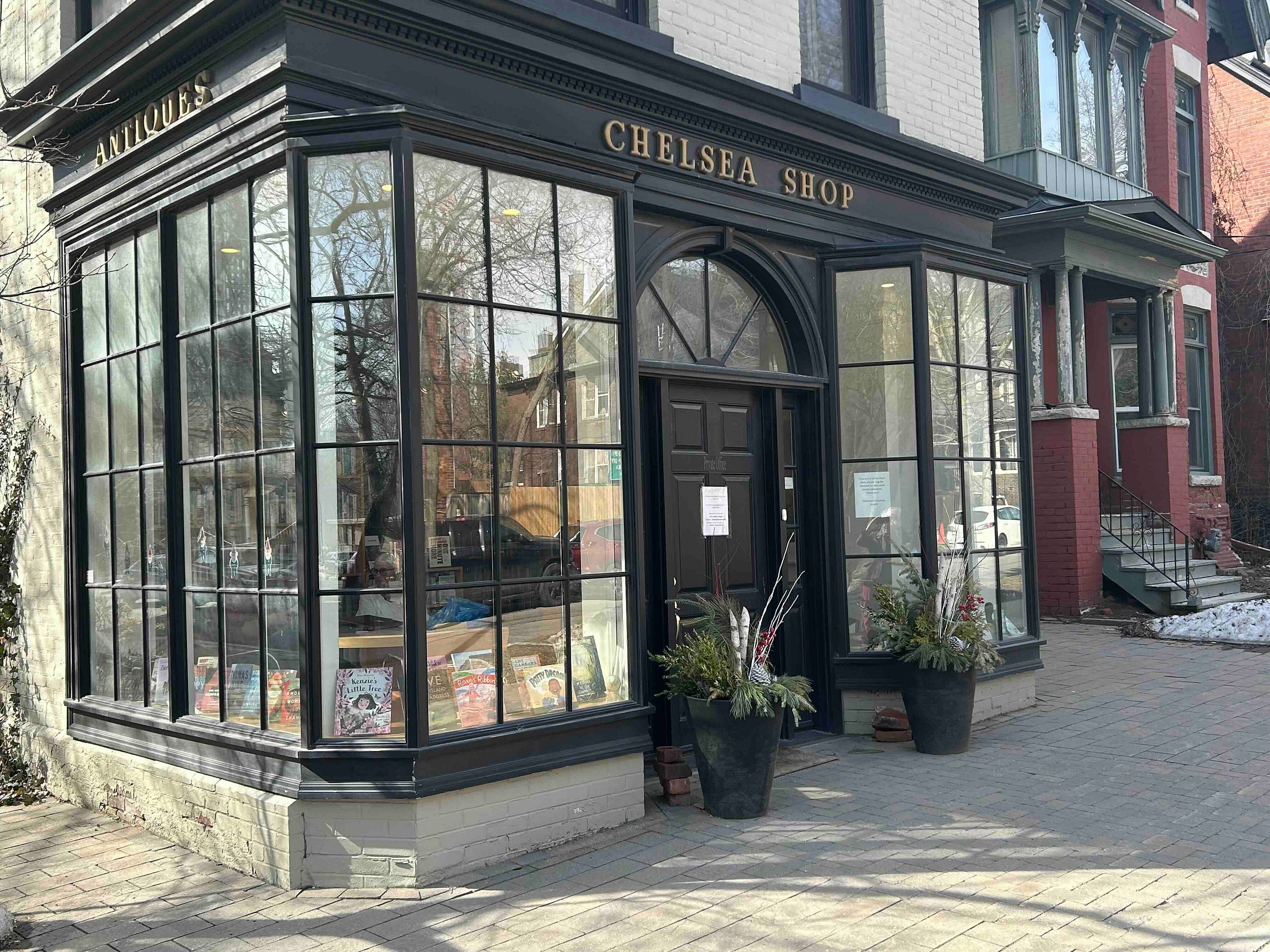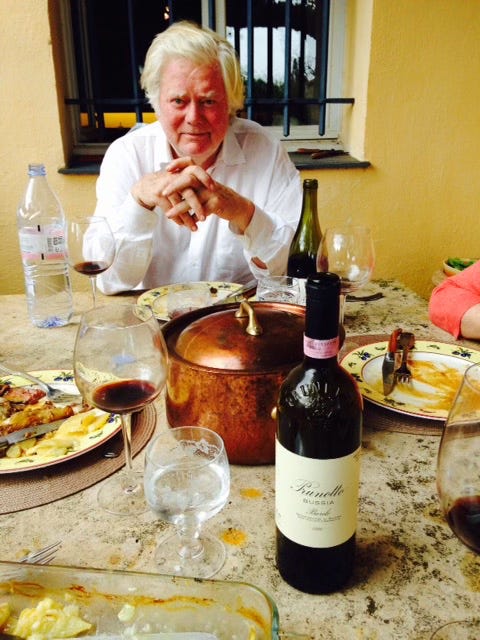Plane Shopping, an Expensive Old Car, a Dancing Dog and a Boulevardier of the Literary World
March 17 2025, Volume 5 # 40
War in the Air
Mark Carney, Canada’s new prime minister is musing about cancelling the contract to buy almost $20-billion worth of Lockheed F-35 fighter jets.
Carney mused about buying another fighter during his leadership campaign. On Friday Canada’s Defence Minister, Bill Blair, told the CBC the deal could be in play.
Carney’s first foreign trip will be to London and Paris this week, not Washington. President Macron will probably be trying to sell Canada something else.
One replacement for the F-35 might be the French Dassault Rafale.
Or the Eurofighter Typhoon.
Royal Canadian Air Force pilots I spoke to are dying to get their hands on the F-35.
The Superpower at Sea
The United States is called a Superpower and a huge part of that is its mighty Navy the reason it can exert power anywhere in the world as it did in Yemen this weekend.
The latest and most expensive— at $12.9-billion—American super carrier, USS Gerald R. Ford. It and the other 10 nuclear powered carriers project American power around the world.
Marxist Countries
Three of these countries North Korea, Laos and Cuba, in that order, are still Marxist.
China and Vietnam are capitalist powerhouses masquerading as Communist.
Ho Chi Minh City, once known as Saigon, is the booming business and commercial capital of Vietnam. There may be a Red Star, but markets rule.
The Enemy of My Enemy is My Friend
Here’s an oddball idea on the tariff front? Why not do a deal with China, kill the 100% tariff on Chinese electric cars, that Canada did to keep Joe Biden happy, in exchange for China dropping tariffs on Canaidan agricultural products. The image below is two pump jacks sitting in a field of Canola in Saskatchewan.
It is actually a bit Machiavellian. It would drive Elon Musk nuts. And it could be spun as an environmental win, allowing Canadians to buy cheap Chinese electric cars. It’s radical. It worked for Nixon and Kissinger.
This image is of the product line of EVs coming off the BYD line in China
.
September 11, 2011 Remembered from The Sky
No one knew what was happening.
Planes still flying 17 minutes later.
The skies almost empty about 45 minutes after President Bush ordered that any plane flying could be shot down. Many landed in Newfoundland.
A Lot of Money for a Simple Car
It’s beautiful but simple. I know, because I owned a 1965 Porsche 356 C, though it wasn’t a convertible. There is no gas gauge, when you run of gas you flick the reserve switch. There is no real heater. The heat comes through tranfser boxes like old Volkswagens. The engine is only 1600 CCs. The Porsche 356 was expensive in its day, about the same price as a Jaguar E-Type.
But it is incredibly fun to drive and it is understated cool. The price of $210,000 is incredible. This isn’t a Ferrari. I sold mine for $10,000 in 1988, and that’s Canadian.
The Sealy Sit
Sealyham Terriers are one of the only, if not the only, who can sit on their haunches for an extended period. Poppy is our third Sealyham.
Photo by Lowell Fosbook Greenaway, eight years old.
Essay of the Week
There’s a corner store with walls of books behind its large windows, kitty corner from the giant Robarts Library at the University of Toronto. A sign on the door says: “We are not a bookstore”; it is in fact the converted antique store, Chelsea Shop, that is the head office of the literary agency that Bruce Westwood founded.
Mr. Westwood was a successful young entrepreneur when he switched gears and built Westwood Creative Artists, which became probably Canada’s most successful literary agency, representing more than 500 writers, responsible for the publication of 3,500 books over the past 30 years. He died at his home in Ontario’s Hockley Valley on Feb. 28 at age 84.
Along with famous novelists such as Yann Martel and Rohinton Mistry, the agency has represented at least four prime ministers, two Governors-General and four provincial premiers in the time it has been in business. It also represents Eric Hill, author of the children’s book series about a puppy named Spot. There is a long bookshelf of his work at the Westwood Creative Artists office and faux bookstore.
Business is the operative word. Mr. Westwood did not fit the mould of the classic literary agent; he started life as an entrepreneur, a dealmaker in everything from a soft drink firm called The Pop Shoppe, a high-end food store on Rosedale’s Yonge Street strip, the first Hermès boutique in Canada and a solar panel company long before renewables were a big thing.
“He put solar panels on the roof of our house,” his former wife, Lyn Sifton, said. The couple remained on good terms after their divorce. “He had the self-belief to pursue every opportunity that life presented. He lived life large and was exciting to be around.”
Bruce Westwood was born in the Montreal suburb of Pointe Claire on April 25, 1940, to George and Pearl (née Nichols) Westwood. His father died when Bruce was 14 and he spent a lot of time with his maternal grandparents. He went to work after completing high school.
His first job was with Imperial Tobacco as a buyer, heading down to southern Ontario for the competitive auctions for Canadian tobacco. That raw capitalism probably honed the deal-making instincts that would later prove invaluable to him.
While he was working in Montreal, he attended night classes at Sir George Williams University (which later became part of Concordia University).
He quickly became a successful entrepreneur in Toronto, but after being involved in the Harbourfront Literary Festival one year, he decided he wanted a life in the literary world.
Kristine Wookey, his longtime partner, said he never was totally in love with the world of business.
“The thing that he did love was Westwood Creative when he started it. There was nothing he ever wanted to do more than sit and talk with writers and try to sell everything that he could get his hands on that he thought was half-decent,” Ms. Wookey said.
To start his business, he bought two small literary agencies and linked up with an agency in New York.
“I first met him because he purchased from me two literary agencies and he had made a friendship with an eminent agent in New York named Sterling Lord and the original name of his agency was Sterling Lord Associates (Canada) Ltd., but Sterling eventually sold his share in the agency and so Bruce changed the name to Westwood Creative Artists that year,” said Michael Levine, who became a partner in the agency and still works there.
Mr. Westwood absorbed the culture of the literary world in a hurry, learning from Anna Porter, who was both a publisher and a novelist. When he wanted to become an agent, he approached Ms. Porter, founder of Key Porter Books, seeking advice.
“Bruce sat next to me in the Key Porter booth and took notes. It was quite unnerving,” Ms. Porter said, adding that he was “a quick study.”
So much so that his agency was soon representing her as an author. The two of them were at the Frankfurt Book Fair and Ms. Porter was pitching a Japanese publisher on a project when Mr. Westwood appeared with a foreign offer for her novel The Book Fair Murders.
“Bruce stood behind the publisher. And held up his hands, showing the figure of how much he sold the rights for. It was an unbelievable number, I think $100,000.”
“Bruce was a classic salesperson of the old school,” said Hilary McMahon, who started at the agency as a receptionist and is one of the people who runs its now. “He didn’t send a submission out by email to 50 people. If he had a manuscript he loved, he went out and met the editor for lunch, and sold them on the idea before they even read a word. And then he’d come back and say, ‘I sold it.’ And it wasn’t just one deal at a time. It was like a factory of deals.”
An old-fashioned deal-maker, he liked to do things the traditional way: on paper.
“When he went to a meeting at a publisher’s office or a lunch he would carry manuscripts in his vintage leather briefcase. He always dealt with paper, and didn’t like to read on a computer screen,” his daughter, Whitney Westwood Moore, said. “Most of all he brought a business mind to the literary and publishing world.”
Publishers can be swamped with manuscripts from writers, and it is one of the reasons they use agents to sort through offers. “Bruce would call me and I would see his name on the screen and pick up. He would start by saying ‘May I read you this first paragraph?’ He was delighted by the words on the page,” said Iris Tupholme, senior vice president and executive publisher at HarperCollins Canada.
The two worked on projects by many different authors, from Timothy Findley to Olivia Chow.
Mr. Westwood majored in lunch. The agent and the publisher from HarperCollins would meet at table No. 71, one in from the window at Dynasty Chinese Cuisine in Yorkville.
“Bruce was a champion for writers. He loved putting deals together, multi-book deals that gave the writer financial security. And he introduced writers like Timothy Findley to publishers and markets in New York and Europe,” Ms. Tupholme said.
His business partner, Mr. Levine, said Mr. Westwood made a point of giving Canadian writers exposure to the rest of the world.
“We go to the world with the London book fair and the Frankfurt book fair. Bruce had a home in the south of France, he would bring authors there bring publishers there. So he really used his contacts to expand the capacity of Canadian authors beyond our borders,” Mr. Levine said.
Westwood Creative Artists also represented some famous British authors in Canada, including Ruth Rendell, Joanna Trollope, Julian Barnes and the late Sir Martin Gilbert, Winston Churchill’s official biographer.
Ms. Porter said one of the things that made Mr. Westwood a successful literary agent was that he loved to read authors’ manuscripts.
“A lot of agents don’t do much of that. Bruce loved reading and when he was reading something that he particularly enjoyed, his eyes would just light up with joy,” Ms. Porter said. She and her husband became close friends with Mr. Westwood. “You know, he would fill a room with his enthusiasm. That’s an unusual quality for any man. He was larger than life.”
Ms. McMahon reflected on how he always had a dog with him, first a black labrador and then a Portuguese water dog. “It was one of his very distinctive characteristics and my fondest enduring images,” she said, “seeing him walk down the street with his leather satchel full of manuscripts in one hand, and his dog, often unleashed, on the other side.”
A tall man, about six foot four, he was surprisingly agile on the tennis court. “I remember watching Bruce on this magnificent red clay court leaping about like a very large gazelle,” Ms. Porter said. He was also a competitive squash player when he was younger.
There was a tennis court at his house in the south of France, where he and Ms. Wookey spent about three months every year.
“It was easy for Bruce to get to the international book fair in Frankfurt,” she said. “A lot of the international agents would come and see us in France and stay for a night or two. Bruce did a lot of work in Europe as well when we were there.”
Mr. Westwood leaves his life partner, Ms. Wookey; his two children, Ashton and Whitney; and his former wife, Ms. Sifton.







